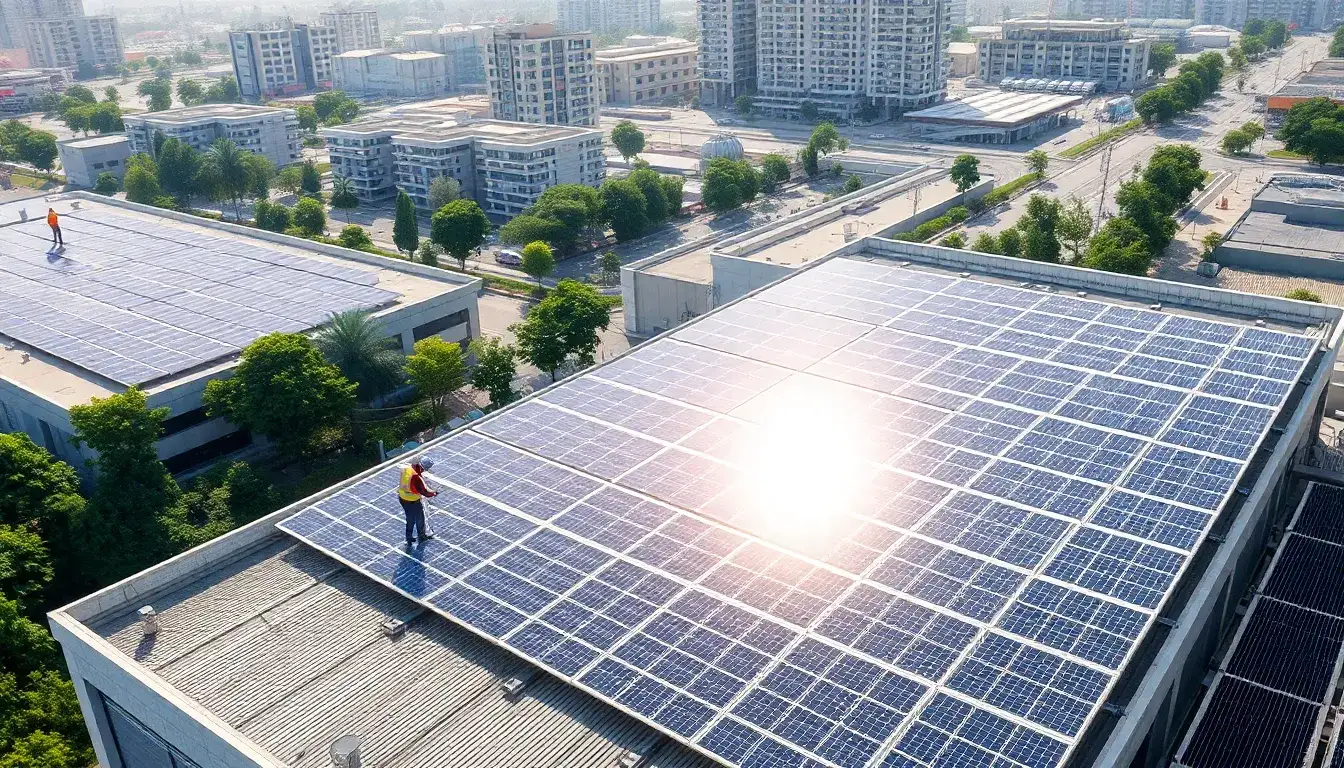
Commercial and Industrial Photovoltaics Overview
The Polar Star Power News Network provides comprehensive updates on commercial and industrial photovoltaics, enabling you to stay informed about the latest developments in this sector. For more information on commercial and industrial photovoltaics, please follow Polar Star Power News.
Key Developments in Commercial and Industrial Photovoltaics
According to recent reports, there are approximately 8,941 results related to commercial and industrial photovoltaics. For instance, the Yong’an Municipal Government in Fujian has specified that seven types of rooftops are not permitted for distributed photovoltaic installations.
Commercial distributed photovoltaics refers to systems installed on the rooftops, walls, and ancillary spaces of fixed buildings such as industrial plants, warehouses, commercial buildings, and public structures. Systems that aim for profit by renting rooftops must adhere to the regulations governing commercial distributed photovoltaics.
Funding and Technological Innovations
The Shenzhen Longhua District is accelerating hydrogen technology innovation with a maximum funding of 2 million yuan. The initiative encourages research and demonstration of innovative technologies such as liquid hydrogen storage, solid hydrogen storage, and hydrogen fuel cell power generation. Efforts are focused on deploying hydrogen fuel cell backup power sources in data centers, industrial parks, green buildings, and drones.
In another significant development, Tianhe Solar has successfully connected a 1.3GW solar storage power station to the grid. Their new module design allows for flexible application in complex terrain for ground-mounted stations and commercial settings, maximizing transportation and installation efficiency.
Infrastructure and Market Trends
The Shangneng Electric company is establishing a large-scale “solar-storage-charging” supercharging station in Shanxi, with a total capacity of 2.045MW. This intelligent charging station uses various specifications of Shangneng Electric’s SN series photovoltaic inverters to create a zero-carbon rooftop solution.
Moreover, Hainan Province is set to clarify charging and discharging prices for independent electrochemical storage stations, treating them as commercial users. The charging prices will align with low-tariff periods of the grid purchase price, while discharging prices will reference the provincial coal power benchmark price.
Future Outlook and Challenges
The energy sector is facing challenges with a significant profit margin discrepancy exceeding 50%. Particularly in the user-side storage market, which primarily serves commercial users, there is a drive for healthy growth despite rising technical barriers. The storage industry is experiencing a competitive environment similar to the photovoltaic sector, particularly after the recent policy changes that mandate mandatory storage installations.
In Ningxia, new implementation guidelines for distributed photovoltaic development have been released. Commercial distributed photovoltaics can either opt for self-consumption or the self-consumption plus surplus electricity grid feed-in model. Systems connected to public institutions are required to have at least 30% of their electricity generated used for self-consumption.
Conclusion
Overall, the commercial and industrial photovoltaic sector is rapidly evolving with significant technological advancements and regulatory changes shaping its future. As the market adapts to new energy policies, stakeholders must navigate challenges while maximizing opportunities for growth and sustainability.







